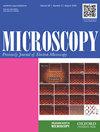用于估计离散元件的多个3D特性的2D–3D转换方法的实验验证
IF 1.8
4区 工程技术
引用次数: 5
摘要
在各个领域中,需要精确评估离散元素(例如颗粒、颗粒、晶粒、空隙、晶体、细胞和纤维)的三维(3D)特性,例如形状和尺寸分布。但通常,在实践中,由于时间、成本或测量技术的限制(如离散元素的微观观察),进行二维(2D)评估而不是3D评估。在这项研究中,对2018年开发的2D–3D转换方法进行了实验验证,该方法使用硅砂的x射线计算机断层扫描分析,基于2D对应物估计多个3D参数。基于五个测量的二维参数(截面积、周长、长轴长度、圆形度和长短轴比),成功地估计了六个三维参数(体积、表面积、长轴长、球形度和长/中、长/短轴比)。对2D–3D转换方法进行了实验验证,该方法使用硅砂的X射线计算机断层扫描分析,基于2D对应物估计多个3D参数。基于测量的二维参数,成功地估计了六个三维参数(体积、表面积、长轴长度、球度、长轴/中轴和长轴/短轴比)。本文章由计算机程序翻译,如有差异,请以英文原文为准。
Experimental validation of a 2D–3D conversion method for estimation of multiple 3D characteristics of discrete elements
Accurate assessment of three-dimensional (3D) characteristics, such as the shape and size distribution, of discrete elements (e.g. particles, granules, grains, voids, crystals, cells and fibers) is required in various fields. But generally, in practice, two-dimensional (2D) instead of 3D assessment is conducted due to limitations in time, cost or measurement technology (as in microscopic observation of discrete elements). In this study, experimental validation was conducted for a 2D–3D conversion method, developed in 2018, which estimates multiple 3D parameters based on 2D counterparts, using an x-ray computed tomography analysis of silica sand. Six 3D parameters (volume, surface area, long-axis length, sphericity and long/middle and long/short axis ratios) were successfully estimated based on five measured 2D parameters (sectional area, perimeter, long-axis length, circularity and long/short axis ratio). An experimental validation was conducted for a 2D–3D conversion method, which estimates multiple 3D parameters based on 2D counterparts, using X-ray computed tomography analysis of silica sand. Six 3D parameters (volume, surface area, long-axis length, sphericity, long/middle and long/short axis ratio) were successfully estimated based on measured 2D parameters.
求助全文
通过发布文献求助,成功后即可免费获取论文全文。
去求助
来源期刊

Microscopy
工程技术-显微镜技术
自引率
11.10%
发文量
0
审稿时长
>12 weeks
期刊介绍:
Microscopy, previously Journal of Electron Microscopy, promotes research combined with any type of microscopy techniques, applied in life and material sciences. Microscopy is the official journal of the Japanese Society of Microscopy.
 求助内容:
求助内容: 应助结果提醒方式:
应助结果提醒方式:


